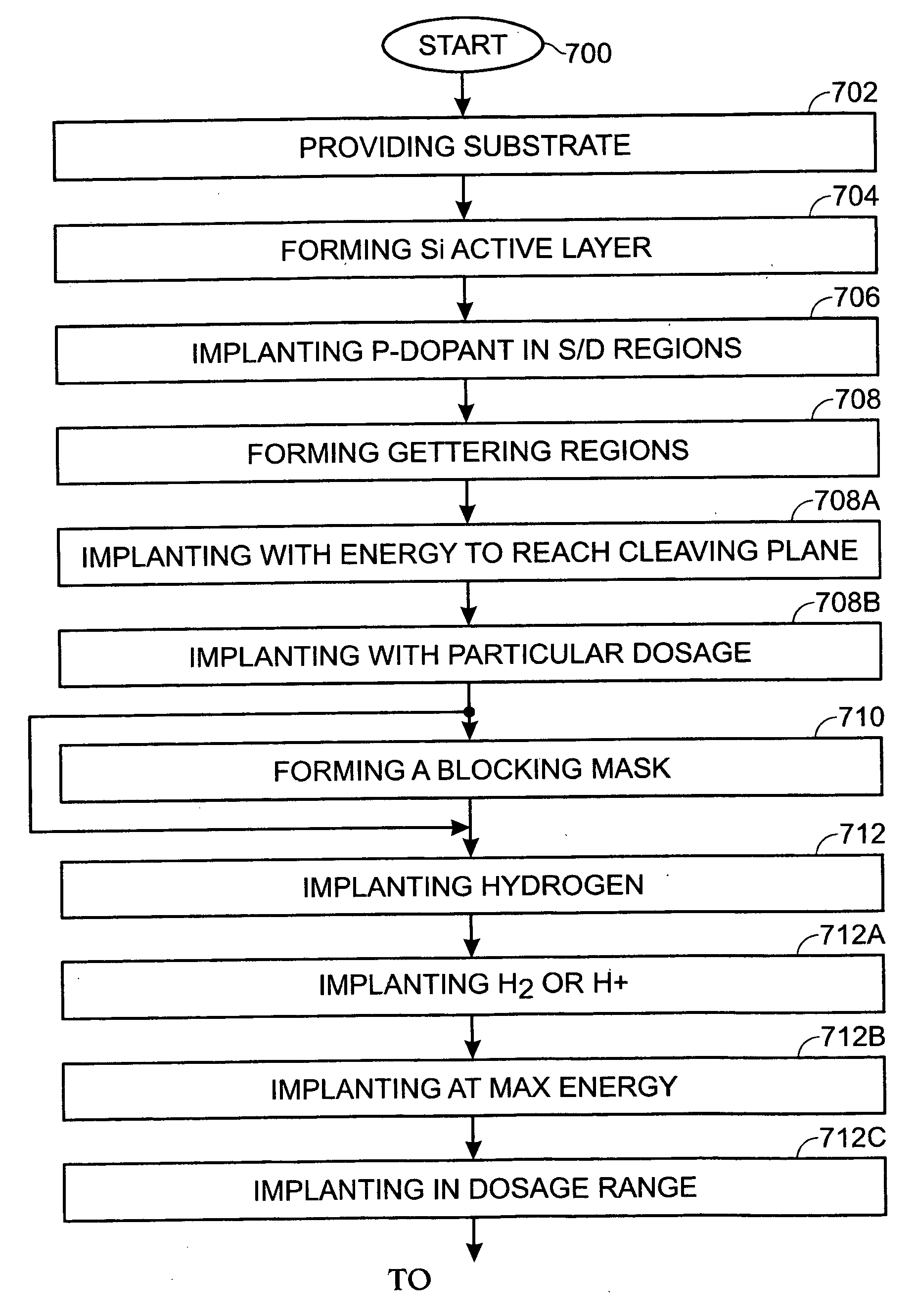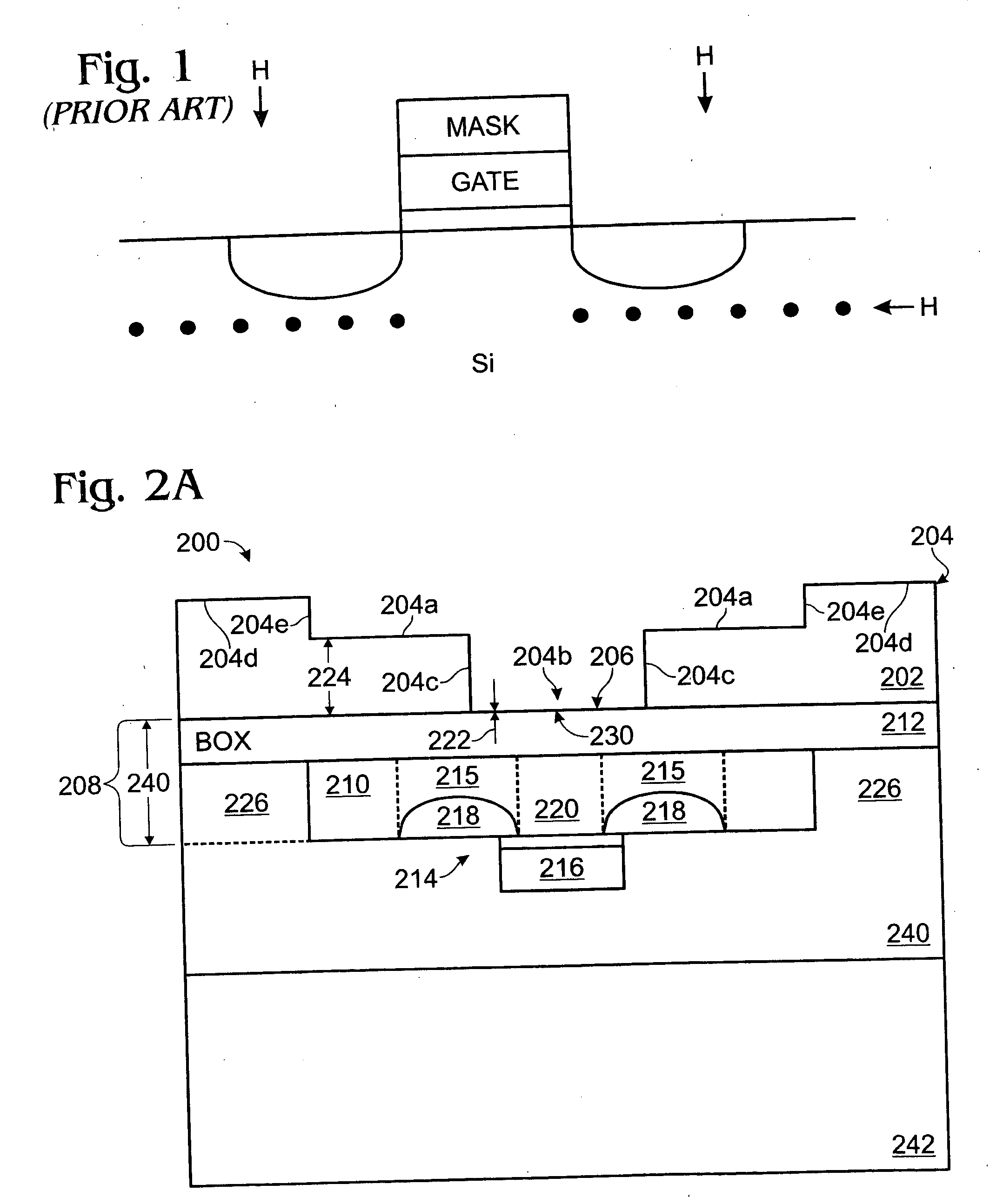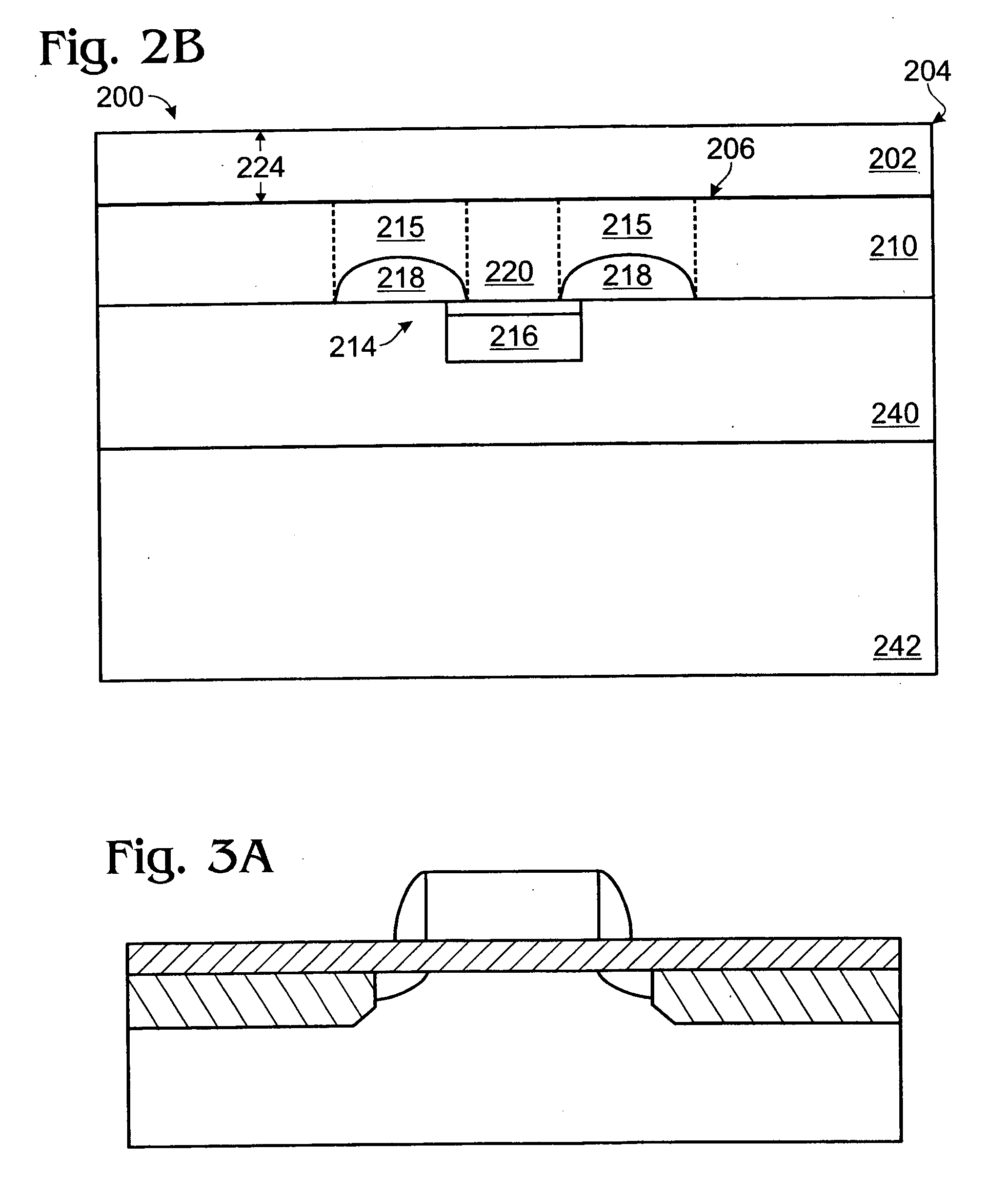Cleaved silicon substrate active device
a silicon substrate and active device technology, applied in the field of integrated circuit (ic) fabrication, can solve the problems of insufficient capability to realize some sophisticated functions such as cpu operations, the steady drive current produced by poly-si tfts is unlikely to be sufficient, and the stability of drive current produced by poly-si tfts may be inadequate for new technologies such as organic electroluminescent displays, so as to reduce the extent of p-dopant deactivation, reduce the level level level level level level level
- Summary
- Abstract
- Description
- Claims
- Application Information
AI Technical Summary
Benefits of technology
Problems solved by technology
Method used
Image
Examples
Embodiment Construction
[0023]FIG. 2A is a partial cross-sectional view of an active Si device cleaved from a silicon-on-insulator (SOI) substrate. The active Si device 200 comprises a Si substrate 202 with a cleaving plane surface 204 and a bottom surface 206. A SOI substrate 208 includes a buried oxide layer (BOX) between a Si active layer 210 and Si substrate bottom surface 206. A circuit 214 is formed in the Si active layer 210. P-dopant gettering regions 215, referred to herein as gettering regions, are formed in the Si active layer 210, underlying the S / D regions. As shown, the circuit 214 in the Si active area 210 is a transistor or TFT. The TFT 214 includes a gate 216, channel region 220, and source / drain (S / D) regions 218 adjacent the channel region 220. Alternately but not shown, the circuit 214 in the Si active layer 210 can be any CMOS circuit or VLSI device (with many TFT or CMOS circuits) using a p-doped semiconductor material.
[0024] The Si substrate cleaving plane surface 204 includes a fir...
PUM
 Login to View More
Login to View More Abstract
Description
Claims
Application Information
 Login to View More
Login to View More - R&D
- Intellectual Property
- Life Sciences
- Materials
- Tech Scout
- Unparalleled Data Quality
- Higher Quality Content
- 60% Fewer Hallucinations
Browse by: Latest US Patents, China's latest patents, Technical Efficacy Thesaurus, Application Domain, Technology Topic, Popular Technical Reports.
© 2025 PatSnap. All rights reserved.Legal|Privacy policy|Modern Slavery Act Transparency Statement|Sitemap|About US| Contact US: help@patsnap.com



